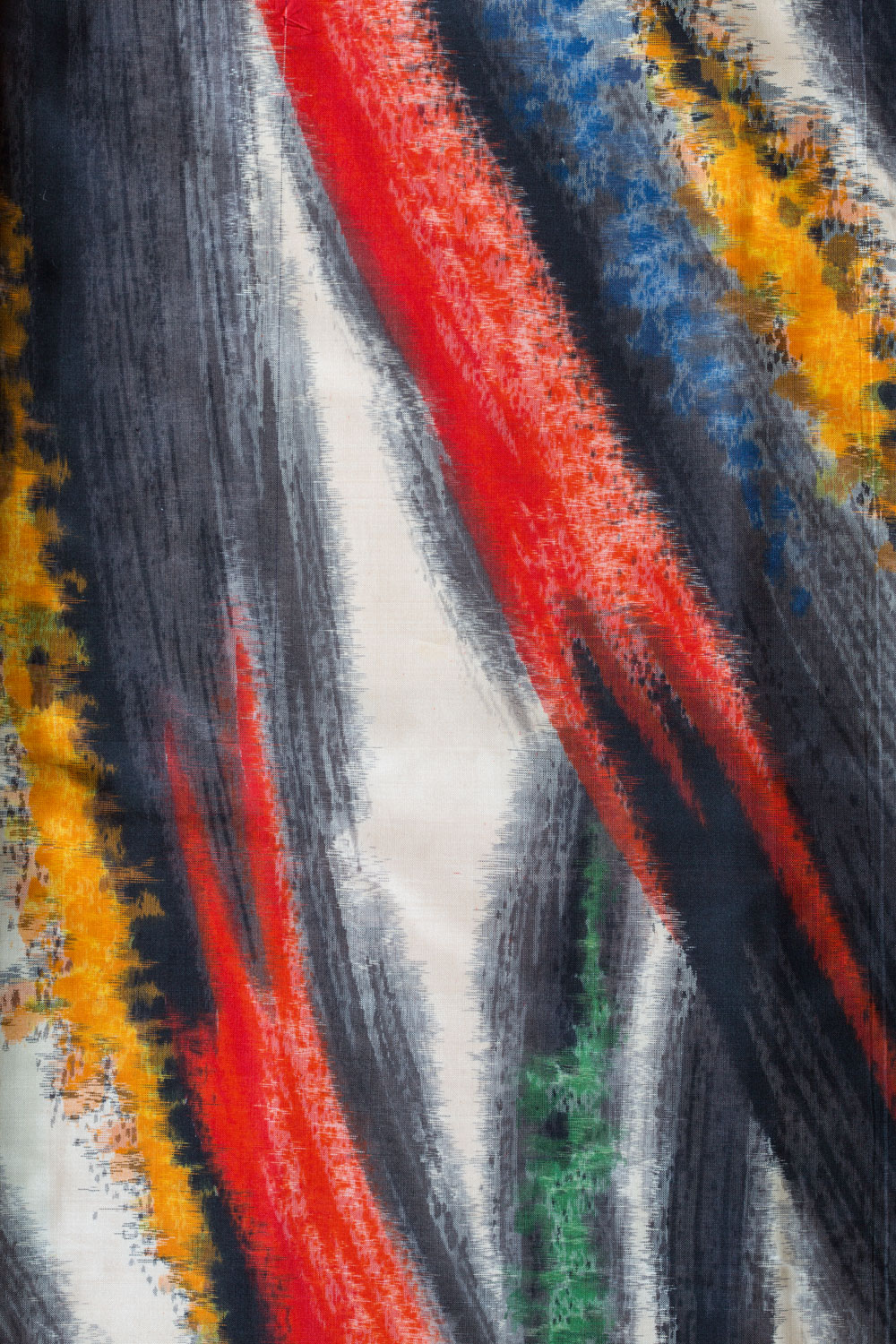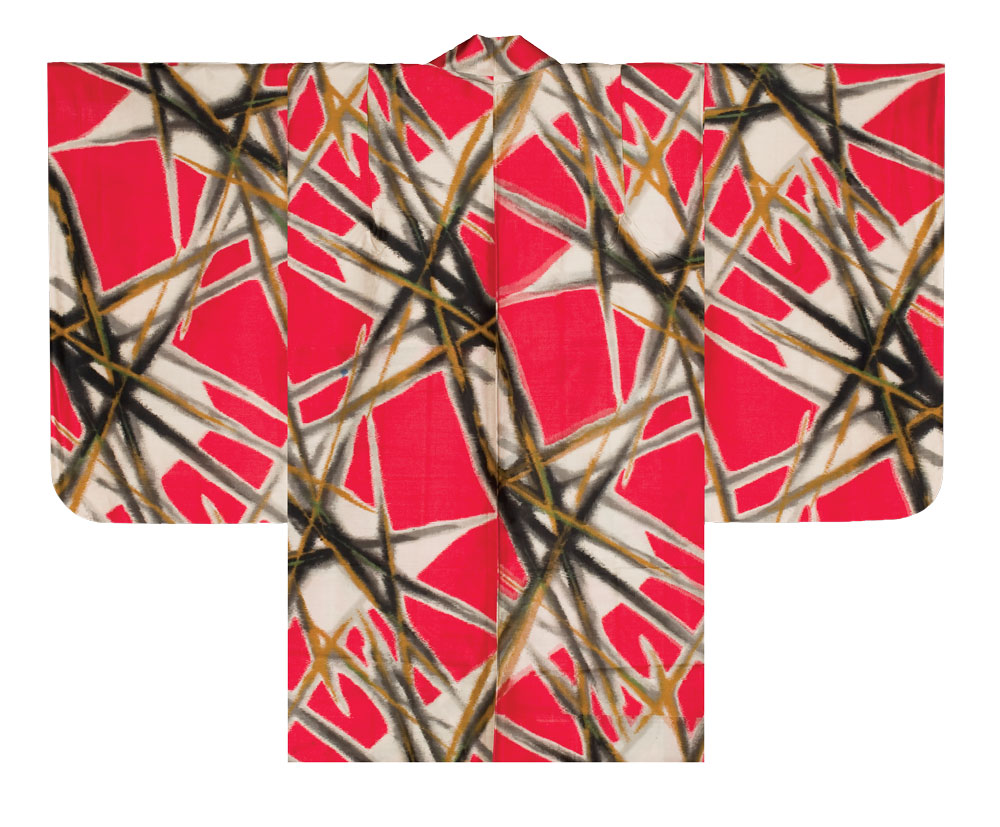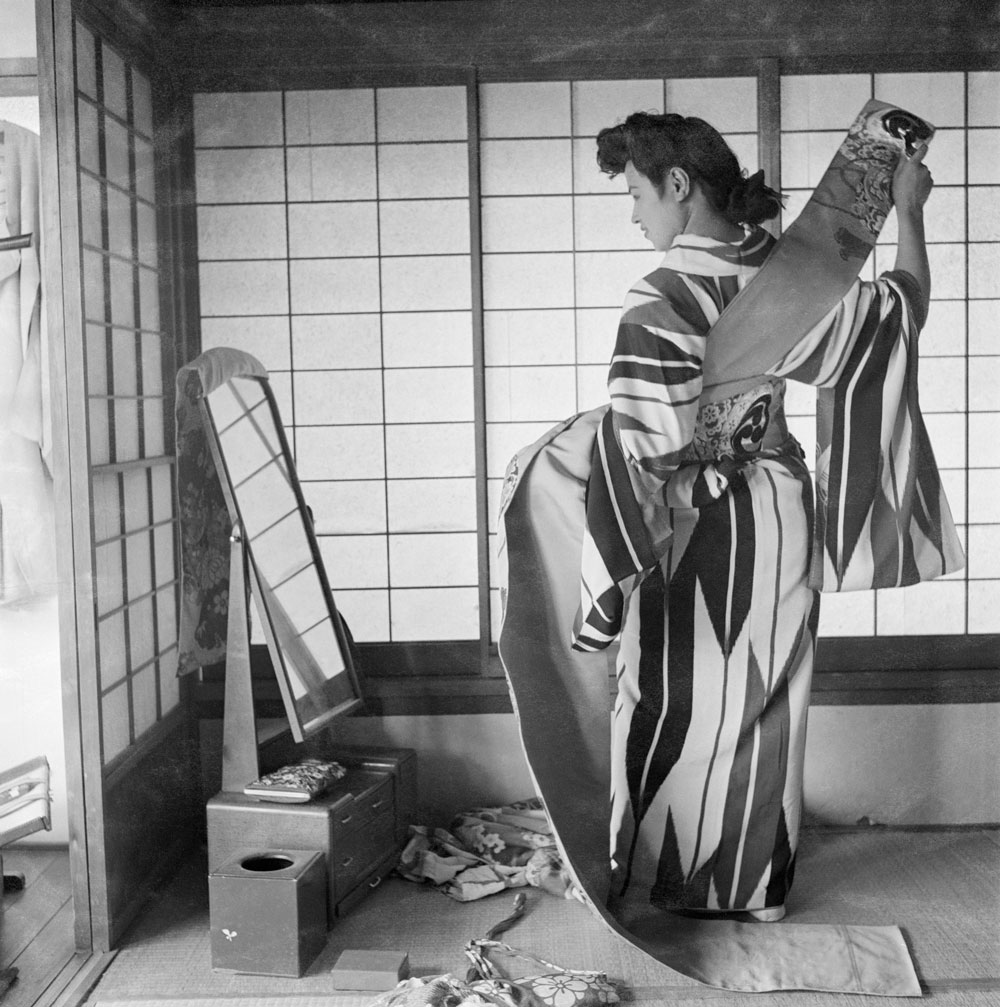Meisen Kimono from HALI 184 – read the whole Summer issue online for free
Japanese meisen kimono have long been a little explored area among collectors and scholars. That is changing, as the basis for this article, a sumptuous new book produced by HALI on the collection of Karun Thakar with essays by Thakar himself and Anna Jackson of the V&A, demonstrates. The following is an extract from an article in HALI 184. Click here to view HALI 184 online for free to read more on the history of meisen kimono.
Pieces from Karun Thakar’s collections range in date from 1300 through to the early 20th century, and examples have been exhibited in the Victoria & Albert Museum, London and the Metropolitan Museum of Art, New York. But it was not until comparatively recently that he discovered the important, and aesthetically singular, sub-genre of meisen kimonos. He now owns some 250 meisen kimono and haori (half kimono or jackets).

In meisen designs, patterns and themes broke free of traditional constraint. With the West providing Japan with a whole new aesthetic, the perfection of formal Japanese art disciplines was replaced by a looseness and expressiveness created by the use of meisen weaving and stencils. Karun Thakar Collection
The word ‘meisen’ literally refers to the silk fabric, a smooth-textured, fairly lightweight weave. It was patterned using a paste resistdyeing technique developed from the earlier invention. However, the paste was applied not to woven cloth, but on to the warps, which were laid out on a board. The paste was applied through the stencils (one for each colour) with a spatula. The stencil was then moved to the next warp section and the process repeated. This was a speeding-up of the traditional resist dye kasuri ikat technique, in which sections of yarn were bound to resist colour penetration in the dye bath, and retained the characteristic blurred outlines of the hand-tied method. Meisen was thus a fairly inexpensive, durable yet attractive fabric, patterned using a relatively quick method and bright chemical dyes to bold effect on what was essentially an informal, everyday garment.

Meisen designs make obvious references to western artists working in the late nineteenth and early twentieth centuries. Technical advances allowed producers to achieve design details that previously had not been possible, seen here through the appearance of brushstrokes. Karun Thakar Collection
While the social, political and economic context of the early 20th century was very different (from earlier eras in Japan), the dazzling designs of the meisen kimono and haori (which resemble jackets) in the collection present a significant moment in the history of this remarkable garment.
Click here to view HALI 184 online for free to read more on the history of meisen kimono.
To order a copy of Kimono Meisen visit www.arnoldsche.com.




























Comments [0] Sign in to comment